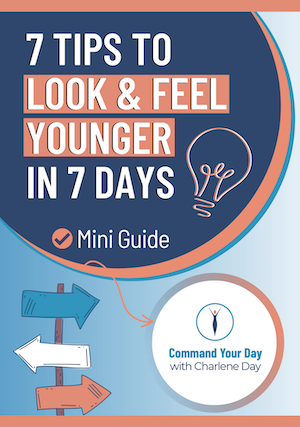4 Types of Estrogen
The hormone story is certainly a very complicated one. Barraged by misinformation, myths and propaganda, it’s no wonder that so many women are confused about matters relating to their bodies and their health.
It is time for women to take even greater responsibility for their health, their choices and their lifestyles. The greatest weapon against compliance, ignorance and conformity is knowledge.
This blog will give greater understanding of the different types of estrogens as well as alternatives for safe, effective and natural ways of balancing estrogen. It is hoped that you will be able to use this information to ask serious questions of your health provider, to demand answers and to willingly investigate safe alternative approaches.
4 TYPES OF ESTROGEN
There are four types of estrogen: those naturally occurring in the body, those synthesized for ingestion as medications, “xeno” or foreign estrogens from modern industrial and household chemicals, and phytoestrogens from food plants, many of which provide important health benefits.
1. NATURAL ESTROGEN
Estrogen is actually the name given to a group of hormones. There are at least twelve different estrogens, but only three are naturally present in significant quantities: estradiol, estrone, and estriol. Both estradiol and estrone are present in large quantities in the venous blood from the ovaries, while estriol is an oxidative product derived from estrone metabolism. The conversion occurs mainly in the liver. The estrogenic potency of estradiol is 12 times that of estrone and 80 times that of estriol. As a result, estradiol is considered to be the major estrogen.
Estrogen hormones are steroids. They are synthesized in the ovaries from cholesterol or acetyl coenzyme A. It is particularly interesting that progesterone and testosterone are synthesized first, and then converted into estrogens.
2. SYNTHETIC ESTROGEN
Synthetic estrogens are made by the pharmaceutical companies. They have had their molecular structure altered so they can be patented. They tend to be more potent than the body’s own estrogens and more toxic.
The Pill: Oral contraceptives are made with synthetic estrogen and synthetic progestins (known as the combined Pill). In the early 1960s, the Pill was widely marketed as an effective, safe and convenient method of birth control. However, the initial trials were flawed and inadequate. Nonetheless, the Pill was promoted with all the enthusiasm the pharmaceutical companies could muster. Dr. Ellen Grant, author of The Bitter Pill and Sexual Chemistry, was an early researcher of synthetic hormones and their effects on health. Back in the 1960s she was shocked when synthetic hormones were not withdrawn from the market due to their known serious side effects.
So, just what are the effects of suppressing natural hormones with synthetic ones? The Pill literally stops menses, and bleeding occurs each month only because the synthetic hormones are not taken for seven days of the cycle. The bleeding that occurs would be more accurately termed “withdrawal bleeding,” not menstruation.
Estrogen Replacement Therapy (Hormone Replacement Therapy – HRT) Perhaps there’s no topic of greater confusion to woman than the highly publicized introduction of HRT for the menopausal woman. Hormone replacement therapy was the next great discovery to arrive following the advent of the Pill. The pharmaceutical companies had found another lucrative market for their synthetic hormones: the menopausal woman! It is because HRT is given at lower doses than the Pill, the side effects are often more subtle and are slower to show up.
3. XENOESTROGENS (PSEUDOESTROGENS)
They are given the name “xenoestrogens” since, although they are foreign environmental chemicals, they are taken up by the estrogen receptor sites in the body and seriously interfere with natural biochemical changes. These estrogen-like mimics have an uncanny ability to mimic natural estrogen. Xenoestrogens are fat-soluble, not biodegradable or well excreted, and accumulate in fat tissue of animals and humans. They are also dangerously toxic. Remember that the principle function of estrogens is to cause cellular proliferation and growth of tissues of the sexual organs and other tissues related to reproduction. So the union of hormone mimics to receptors, triggers genes that stimulate the production of proteins that accelerate cell division. This cell division is leading to a host of health challenges. Please see the last blog for more information on this and the safe estrogens.
4. PHYTOESTROGENS – SAFE ESTROGENS
Plant estrogens, called phytoestrogens, compete with natural and xenoestrogens for binding to receptors in the body. The phytoestrogens protect us from the toxic, synthetic petrochemical estrogenic compounds. They act as weak estrogens and appear to produce estrogen effects in postmenopausal women and anti-estrogen effects in premenopausal women. Phytoestrogens thus have this ability to act as “balancers” – by raising low levels of estrogen and by lowering high levels by replacing a strong estrogen with a weaker one.
Significant amounts of phystoestrogens are found in many foods including soy products, flaxseeds, chickpeas, cashews, oats, corn, apples, and almonds. One of the best sources of phytoestrogens are soy products. The phytoestrogens are called isoflavones, which have been isolated in two forms: genistein and daidzein.
Reversing Estrogen Dominance
So what is happening today is that women are being exposed to too many types of estrogens and ending up with what is labeled “estrogen dominance”. Stress, nutritional deficiencies, xenoestrogens, and synthetic estrogens cause an imbalance between estrogen and progesterone. This estrogen dominance means that estrogen has begun to overshadow the other players, creating biochemical dissonance.
There is another way to balance the estrogen-dominance effect through the use of transdermal natural progesterone cream. Natural progesterone, a cholesterol derivative, is made from wild Mexican yams or soybeans whose active ingredients are an exact molecular match of the body’s own progesterone. Make sure if a cream says “wild yam extract”, that there is actually progesterone in the cream. Supplementation with natural progesterone corrects the real problem: progesterone deficiency. Natural progesterone is not known to have any side effects. It is non-patentable and inexpensive.
So even though there is a challenge here with over exposure, there are safe alternatives to help us get back into balance. Please take time to educate yourself and please contact me if you have any more questions.
To your good health,
Charlene



Thanks for the information on estradiol, I had no idea it was that much more potent than estriol. Buy why wouldn’t be in the same class as “SYNTHETIC ESTROGEN” because it is prescribed be used for HRT ?
Estradiol, estrone, and estriol are made by the body but they also can be synthesized. When they are synthesized then they are in the category of synthetic. Let me know if you have any more questions. https://charleneday.com/lifestyle-coaching/